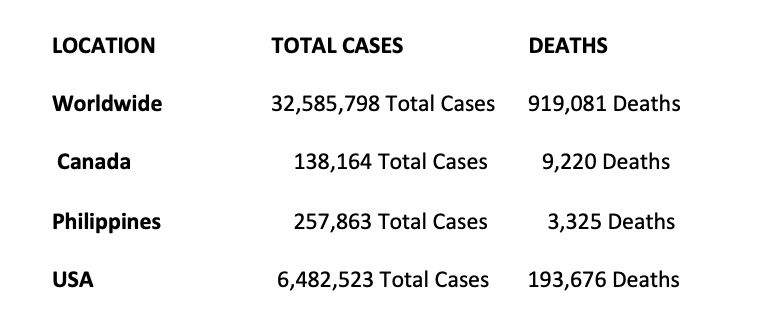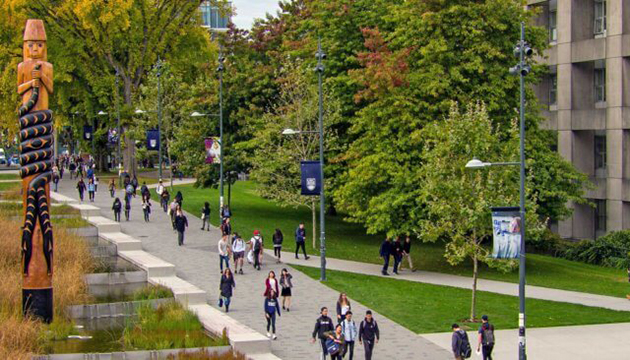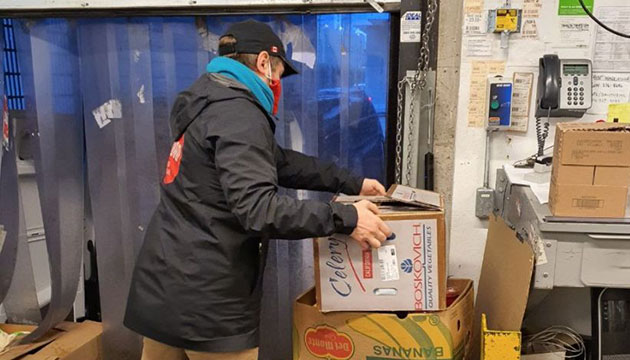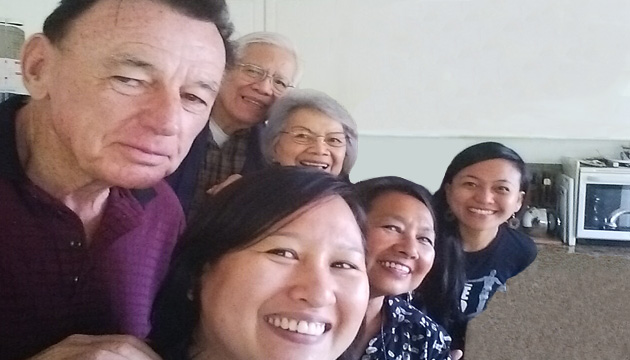(Part 15 of Dr. Rey D. Pagtakhan’s column, Medisina at Politika, on Covid-19)
Colleges and universities have re-opened for the 2020 Fall semester in the shadow of the COVID-19 pandemic. The new and highly contagious viral respiratory disease has caused widespread illness and loss of life worldwide and created uncertainties and risks to learning. Controlling the spread of COVID-19 for the safety of students, staff and the proximate community and providing rich college life experience – top-notch academic instruction and interactive social experience – are the twin challenges. Wrote the United Nations in its August 2020 policy brief, Education during COVID-19 and beyond: “The COVID-19 pandemic has created the largest disruption of education systems in history, affecting nearly 1.6 billion learners in… all continents… When education systems collapse, peace, prosperous and productive societies cannot be sustained.”
Be that as it may, going off to college is a time eagerly anticipated by both students and higher institutions of learning. This phase in educational journey brings students closer to their life career and calling, equipped and prepared. Beyond gaining the essential academic knowledge and technical skills is the attainment of social skills essential to human interactions, including the acquisition of friendship, self-confidence and sense of belonging. The collective educational harvest would help guide the destiny of nations, which for Canada would be the sustainability of peace, order and good government. Hence, administrative and faculty staff prepare the college environment for re-opening of classes with meticulous care.
This time in history, planning for resumption of classes has included heavy emphasis on health safety. The new disease has caused enormous illness and loss of human lives and livelihoods and inflicted serious disruptions to the national economy, including the financing of education
Magnitude of Human Toll
As of September 12th, Johns Hopkins University has reported the following statistics:

Reflected in these numbers are the more than 7.8-million patients and 83-thousand deaths added anew worldwide in the half-month since my prior commentary. Of whom over 10,000 were diagnosed in Canada, 48,000 in the Philippines, and more half a million (568,610) in the USA, with the average number of daily deaths calculated at 7, 65 and 792, respectively.
College Environment and Risk for Speedy Spread of Infection
College settings have become new hotspots for COVID-19. Could returning students become key messengers of disease spread as they gather for social events? “Five students at the University of Western Ontario have tested positive for COVID-19 less than a week after the start of classes,” reports the Globe and Mail as this commentary goes to the press, “prompting the local health authority in Ontario to declare an outbreak.” This is the first major outbreak linked to a Canadian university since the fall semester opened. Large gatherings of Queen’s University students partying in disregard of physical distancing rules had been observed; students in Atlantic Canada had been charged for failing to self-isolate under the Health Protection Act over the Labour Day weekend; and hundreds of noise complaints had been filed. Dozens of universities in the United States have experienced similar number of outbreaks linked to parties or to students living together in residences. While the level of community spread has been much lower in Canada than in the U.S.A., bringing students together has raised alarm from public health officials.
College and university campuses are not in a bubble. They are a community within the surrounding greater community of residents and businesses. Inside the classrooms and outside on campus and nearby off-campus settings, the venues provide ideal locations for the virus to spread from one infected individual to more than one contact, conveniently with speed and unknowingly from asymptomatic or pre-symptomatic students. The collective daylong activities natural to the college environment provide the intensity of in-person interactions with the density of the student and staff populations within compacted periods of time.
The virus has several travel routes and entry points: embedded in large and small droplets in saliva, mucus and phlegm from an infected person during coughing, sneezing, talking, and singing that then enter via the nose and mouth (most frequently) and the eyes of contact by inhalation, or transferred through handshakes and hugging/kissing, or by touching of contaminated surfaces and then one’s face. Hence the need for face masks, physical distancing, hand hygiene, cough etiquette, alternative handshake-greeting gestures, and non-touching of the T-zone of one’s face (eyes, nose, and mouth) with unwashed hands, and disinfection of frequented physical surfaces.
Young adults comprise the student population. Their thirst for independence and socialization, sense of invincibility and daring, and sensitivity to peer influence are natural and worthy of remembering and consideration. They would spend more time indoors – in the classroom, laboratory, dining hall, library, fraternity/sorority houses/village, dormitory and nearby off-campus residences, gym, sports, and entertainment venues. And they would gather with more people – fellow dorm residents, classmates and members of student social groups. While safer, being outdoors does not equate to protection, if physical distancing is not or cannot be exercised and wearing a face mask is deemed an intrusion and a social burden during mass gathering.
The teaching and support staff include older adults, some of whom may have underlying medical conditions. The over-60 age group is particularly vulnerable to the infection and, with an underlying health handicap, to its severity.
Not to be overlooked in the consideration of safety are the families of students and staff, to whom and from whom visits and contacts are expected.
Such is the college environment – a potential petri dish for rapid spread of COVID-19.
The Canadian Situation
As preparation, Canada’s colleges and universities have transformed campuses to comply with the recommendations of public health officials. They have confronted the following challenges: move all or most programs via virtual learning platforms; make technology investments for course delivery online; budget for lost revenues from non-academic activities, events, and residences and from loss of international students unable to come.
Across the country, 54% of colleges and universities have chosen to deliver programs online, 40% have adopted a hybrid model, and about 4% are offering courses in-person in communities where prevalence of infection has been low and where class sizes are small with facilities able to accommodate social distancing.
Challenges and Solutions
Getting 100% of students to comply to all the safety guidelines is one of the challenges of COVID -19 that cannot be fully solved. Nonetheless, a CNN panel of contributors has polled specialists in infectious disease, teaching, counseling, and business for their insights on some of the challenges and feasible solutions. Let me distill from them 10 pointers:
- The greatest challenge is a combination of testing and controlling the spread of Covid-19 in an environment conducive to transmission of the virus.
- Colleges could keep faculty and staff safe by limiting class sizes and enabling physical distancing; wearing face masks especially when indoors; testing and contact tracing should be done regularly; and work that can be done remotely should be done remotely.
- Acknowledge with candor that bringing people to campus from across the country or the world could not possibly be done without witnessing large outbreaks.
- The only model that will be effective is one that tests large numbers of students — those who live on and off campus — regularly and turns around results quickly, coupled with effective contact tracing. Also, a testing strategy is only one part of a much broader approach that includes wearing face masks, keeping the distance, and frequent handswashing.
- One can imagine large, packed seminars are over; the same rules that apply across the rest of life apply on college campuses. If you want a return to normal — for clubs and sports and normal socializing to return — the best way to get there is to wear your mask always, practice physical distancing and wash your hands regularly. By stopping the spread now, everyone brings us closer to a return to normal.
- To stay safe and prevent the spread of the virus, students living in college housing on or off campus are well advised to wear masks, maintain physically distance, wash hands or use hand sanitizer regularly and limit the number of people socialized with, acknowledging that carriers can be without symptoms.
- There is significant risk to nearby communities. If bars and restaurants are open near a university, students will be there. Business owners should recognize this eventuality, protect their employees and encourage good behavior from everyone. As a resident, adjust one’s schedule and behavior accordingly if necessary.
- College students should certainly be up to date on availability of safe and effective vaccines and, if something feels wrong, they should seek medical attention promptly.
- Acknowledge that international students play an important role in our universities and colleges and governments should make rules for their admission clear, coherent and timely.
- Acknowledge that colleges and universities telling students to abstain completely from social interaction or threatening them with suspension does not work. That colleges, families and health experts reach this group to help them understand and follow the rules by:
- treating these students like adults and
- communicating with them the dangers of COVID-19 and how it is spread, sharing with them the expectations they have for behaviors, and informing them on how they can protect themselves.
Why Some Students Break COVID-19 Rules
Collegiate rites of passage to adulthood encourage youth to take risks to find new connections. Restrictions to behavior could only lead to rebellion. That’s why fraternity and sorority bid days at the start of the semester are accompanied by mass gatherings and parties, rules against them in the age of COVID-19 notwithstanding.
Note, however, that risky behaviors may be a function of their normal physiological and emotional development, not conscious breach of prescribed public health rules. This much we have learned from developmental psychologists. CNN News has shared the opinions of three experts in the field - assistant professor and developmental psychologist Hannah Schacter at Wayne State University, senior director for Counseling & Psychological Services at Pennsylvania State University Ben Locke, and director of Alvord, Baker & Associates who counsels young adults, Mary Karapetian Alvord. All three have made the following observations:
1) many of the exciting firsts college promises -- freedom, independence and friendships – lead students to act in ways that can expose them or others to the virus because the brain region during this age period that is most sensitive to social rewards has developed ahead of the part responsible for consequence-driven decision-making;
2) they know the negative consequences of risky behavior but unable to regulate and control the impulses that answer to the social reward of the moment;
3) new friendships and peer approval influence outweigh the potential risks of restricted conduct;
4) their eagerness to connect overtakes their fear of the virus;
5) they depend on social connections to build their identities;
6) they may have internalized earlier medical advice given publicly that children and teens are not part of the high risk group;
7) conflicting messages of wearing of masks from public leaders;
8) they have been overwhelmed by anxiety and depression; and
9) they have difficulty processing the full impact of the pandemic.
These experts have recommended the following approach:
- Colleges and universities need to share with students the responsibility of keeping those on campus safe; shifting blame onto students could stir up rebellion.
- Stir students to an appreciation of mutual benefit and sacrifice and motivate everyone's buy-in to take care of each other.
- Handle them with empathy and acknowledge the sacrifices they have already made to help control humanity’s crisis; summon up the best in them.














